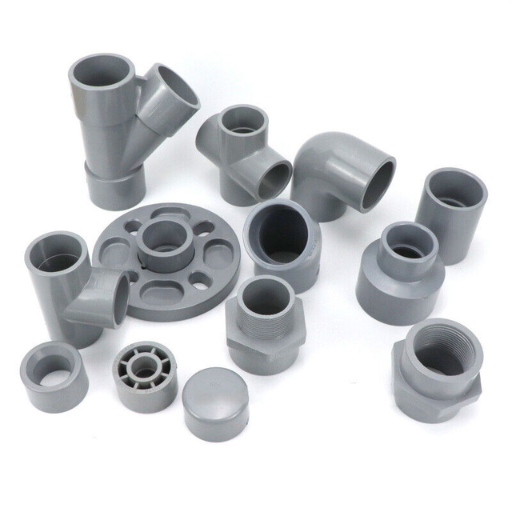Material choice is crucial in water distribution systems, particularly in plumbing, where the selection of materials determines the durability and effectiveness of these systems. One such material is CPVC (Chlorinated Polyvinyl Chloride), famous for its residential and commercial uses. This guide seeks to demystify CPVC pipe fittings by examining their distinctive features, merits, and applications. Irrespective of whether you’re an experienced plumber or a DIY enthusiast, being knowledgeable about CPVC fittings enables you to make informed decisions regarding your plumbing needs. We will delve into the main aspects of CPVC pipe fittings: why they are better than traditional materials, how to install them not to reduce their lifespan, and what benefits can be gained from implementing these strategies.
What are CPVC Pipe Fittings, and How Do They Work?
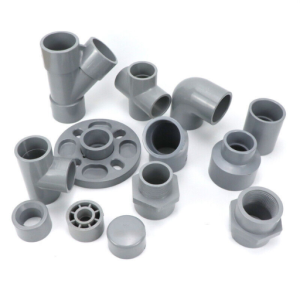
Image source: https://www.ebay.com/
These components are made from chlorinated polyvinyl chloride and join different sections of pipes in plumbing systems. This enables changing flow direction and direction within water distribution networks as they link pipes at various angles. The efficiency and reliability with which water is transported through this medium result from its unique characteristics, like resistance against rusting and the ability to withstand high temperatures, hence no need for insulation. When solvent cement is applied correctly during installation, these fittings form a tight connection that does not allow any leaks, thus guaranteeing a long life span of a structured system. They are also very versatile because they can be used in cold or hot settings depending on where you are using them, whether at home or in an industry.
What is CPVC Pipe?
CPVC pipe is a popular plastic piping used in plumbing systems and other industrial applications. Unlike ordinary PVC, it can withstand high temperatures and pressures, making it suitable for hot and cold water installations. This involves chlorinating PVC resin, which further enhances its durability and chemical resistance properties, making it ideal for use in residential plumbing, fire protection systems, and chemical processing applications, among others. These pipes are also lighter in weight when compared to metallic ones, and they come with more straightforward installation requirements because fewer joints or fittings are needed, thus reducing the overall cost of installation as well as enhancing flow efficiency. The low thermal conductivity also helps maintain water temperature, making CPVC a popular choice across many sectors.
How Do CPVC Pipe Fittings Differ from PVC Pipe Fittings?
In my experience, I’ve found that CPVC pipe fittings differ significantly from PVC pipe fittings mainly due to their application and temperature tolerance. CPVC, on the other hand, can handle higher temperatures and is hence useful in both hot and cold water systems, unlike polyvinyl chloride, which is suitable for cold water only. Furthermore, I have discovered that these particular fittings perform better under heat exposure or caustic substances, making them great for industries where heat or chemicals come into play. In CPVC’s case, however, there will typically be different solvents of cement used during fitting processes due to its chlorine composition, leading to more vital bonding agents. Overall, these variances mean that systems based on CPVC have superior strength against traditional PVC fixtures, ensuring more durable systems that can be relied upon over time.
What are the Benefits of Using CPVC Fittings?
CPVC fittings have several advantages over other application alternatives. Initially, these materials can be used in hot water distribution systems without suffering deformation or breaking due to high temperatures and pressure. This is highly beneficial in industries where heat and chemicals are standard. Additionally, CPVC fittings have a higher resistance against corrosion than metallic ones, which results in a longer life span and reduced maintenance costs. Even more, the low weight of CPVC makes it easier to handle and install, thereby reducing labor time and expenses. Lastly, with its strong joints, CPVC has fewer leakages, facilitating fluids’ more efficient and reliable movement. These reasons have made CPVC fittings quite popular among players in the plumbing and industrial sectors.
What Types of CPVC Fittings Are Available?
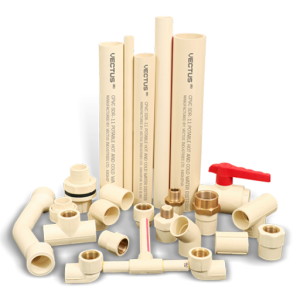
CPVC fittings in various shapes and sizes are available depending on pipe requirements. The range includes elbows, tees, couplings, and caps; all meant to change direction, branch off, or terminate the pipe system, respectively. Still, there are threaded fittings for metal pipe connections, plus flanged ones for ease of separation during repairs. Specialty fittings like unions and reducers have also been noted to address specific conditions that an application may require. All these different options ensure that professionals can get the right fit for their particular project, which improves the versatility of CPVC within plumbing and industrial systems services provided through this technology.
Overview of CPVC Elbow Fittings
The CPVC joint fittings are essential parts of the pipes that smoothly direct fluids in different directions. These joints come in two angles, 45 and 90 degrees, which help to make it easy to pipe around buildings. They weigh less, making them simple to handle and install and strong enough for residential or industrial use. Moreover, CPVC elbow fittings are highly reliable since they offer dependable seals that prevent leaks at the connections. On top of this, these components mate well with ordinary CPVC systems, facilitating their incorporation into existing lines without necessarily requiring the installation of new ones. By and large, CPVC elbow fittings ensure that piping works exceptionally well.
Understanding CPVC Tee Fittings
CPVC wye fittings are crucial elements in plumbing systems meant to create branching points on fluid paths. In most cases, they usually have three ports where two pipes join each other at right angles, whereas there is one more port on the mainline. This approach allows me to plan installations easily without damaging my system’s integrity, thus ideal for both home and commercial plumbing applications. They are pretty adaptable since they can be installed using standard CPVC piping materials. Furthermore, such pipes do not break easily, maintaining strength throughout their working lives as they manage pressures properly and avoid leaking problems encountered by other types of tees made from poor quality cpvc materials, as I had experienced before from other projects like mine.
What are CPVC Couplings and Their Uses?
CPVC couplings allow you to join two sections of CPVC pipes and make a firm watertight connection. These fittings are vital in extending pipeline systems or changing the direction of flow. Typically, different sizes of CPVC couplings are available to fit various pipe diameters, making them ideal for both commercial and residential plumbing systems. They are built to resist high temperatures and pressures, hence their long-life durability.
Exploring CPVC Male and Female Adapters
CPVC male and female adapters are fittings used to join together lengths of CPVC pipe and are, hence, essential components for routing systems within plumbing applications. The male adapter has external threads that connect with other fittings or pipes with corresponding internal threads, thus creating a secure joint. Usually, these adapters come in different sizes, enabling them to accommodate a variety of pipe diameters, which might change directions or extend the pipe system.
They have designs that can resist high pressures and temperatures, so they can be depended on for hot and cold water supply systems. Furthermore, using these types of adaptors improves the flexibility and strength of the plumbing system, making it easy to alter it when necessary. All in all, they must be present when an effective functioning CPVC piping network is needed.
How to Choose the Right CPVC Fittings for Your Project?
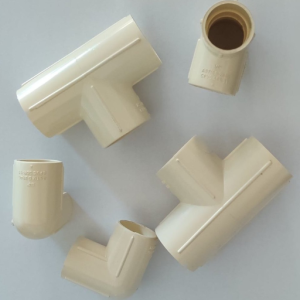
Choosing the right CPVC fittings for your project involves several key considerations. First, assess the specific requirements of your plumbing system, such as the temperature and pressure conditions it will experience. It is essential to ensure the selected CPVC fittings can bear these conditions. The next step is determining the pipe’s diameter since CPVC comes in different sizes, and correct sizing is essential for a tight fit. Moreover, you should pay attention to what connections are needed; for example, to link or expand various parts of piping systems, one might require male or female adaptors. Finally, choosing high-quality components from well-known manufacturers is necessary if you want durable plumbing.
Factors to Consider When Selecting CPVC Pipe Fittings
When selecting CPVC pipe fittings, there are several important factors to keep in mind:
- Material Quality: Make sure that the material from which they are made is high-quality CPVC, as it is more resistant to corrosion, chemicals, and higher temperatures than traditional PVC.
- Pressure and Temperature Ratings: Check whether the fittings are rated for the specific pressures and temperatures of their application field. This provides safety measures against possible breakdowns under extreme conditions.
- Compatibility: Ascertain how suitable they are with existing pipes in terms of dimensions, including thread type, which ensures tight fitting without leaks.
- Installation Ease: Selecting products designed for a simplified installation process, such as solvent welding or compression options, can save time and eliminate the need for special tools.
- Manufacturer Reputation: Always pick reliable brands known to produce long-lasting fittings. Reading customers’ feedback on these items may shed some light on how long they serve and other performance indicators.
By considering these factors, you can procure appropriate CPVC pipe fittings that will effectively meet the requirements of your plumbing project.
Comparing Schedule 40 vs. Schedule 80 CPVC Fittings
I need to consider the intent and objectives of a given plumbing project before deciding on Schedule 40 or Schedule 80 CPVC fittings. Generally, schedule 40 fittings cost less, are lighter, and are adequate for applications with low pressures and temperatures. Nonetheless, when dealing with high-pressure systems or where there are higher operating temperatures, I find that the use of schedule 80 fittings because its walls tend to be thicker, and it can last longer if properly maintained. Even though this may have a higher initial cost, over time, it has been proven reliable and reduced the risk of failure, especially in industries or those areas with high demand. All in all, it depends upon what specific requirements my installation places on me vis-a-vis price tag versus performance.
Understanding the Maximum Working Pressure for CPVC Fittings
The pipe’s schedule and temperature conditions determine the maximum working pressure for CPVC fittings. Typically, Schedule 40 CPVC fittings have a maximum working pressure rating of approximately 480 psi at 73°F (23°C), whereas Schedule 80 could bear up to 810 psi at similar temperature levels. However, these figures drop whenever the fluid transported gets warmer. For instance, Schedule 40 and Schedule 80 will significantly lower adequate pressure ratings at elevated temperatures. Therefore, it is always advisable to refer to manufacturer specifications while selecting CPVCs for your plumbing needs and adjust them for operational heat levels so that safe handling of pressure requirements can be guaranteed throughout their lives.
How to Install CPVC Pipe Fittings?
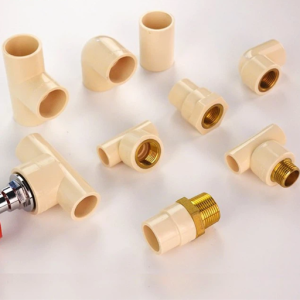
Installing CPVC pipe fittings takes several essential steps to ensure a safe connection free from leakage. Start by collecting the necessary tools, such as a pipe cutter, deburring tool, primer, and solvent cement. This starts by measuring and cutting the CPVC pipe to the desired length while ensuring clean and straight cuts. The deburring tool should then be used to remove any rough edges or burrs on the cut ends of the pipe. CPVC primer should then be applied on both the fitting and the pipe before being allowed to dry briefly. Then, use plenty of CPVC solvent cement in these areas, allowing it to dry briefly before pushing the pipe into fitting with a twisting motion for a strong bond. Allow at least ten minutes for drying to continue with other operations without falling off unnecessarily.
Step-by-Step Guide to Installing CPVC Pipes and Fittings
- Collection of Tools: Assemble all required tools, such as a cutter for pipes carrying water supplies made from plastic (PVC), deburring tools, measuring tape, primers, and CPVC adhesive.
- Cutting Pipes: Using a tape measure, determine the length of PVC needed for your project. Cut this with the help of a cutter so that the end is straight.
- Smoothening Cut Edge: The pipe can then be smoothed by using deburring tools immediately after being cut off to enable perfect sealing between pipes’ edges and fitly parts, thus preventing leakage.
- Applying Primers: Use CPVC primer on the outer side of the tubing and inside fittings, too, to bond together after the manufacturer’s time has elapsed.
- Applying Solvent Cements: A substantial amount of CPVC solvent cement should be applied to both pipe and fitting. This will ensure uniform coverage and a strong bond.
- Connecting Fittings: While twisting it slightly, insert your pipe into this coupling to spread out solvent cement. It only needs 30 seconds to hold it in place until it sets up completely.
- Curing Time: Let the glue hold for the period indicated by its manufacturer before the system gets pressurized; otherwise, the joint will leak.
- Leak Check: Once you know that the adhesives have been appropriately cured, start water flow through those connections. If any are identified, remove the joint, clean the surface, and perform this again.
By carefully following these steps, you can effectively install CPVC pipes and fittings in your plumbing project while enhancing efficiency and safety.
Common Mistakes to Avoid During Installation
There are several common mistakes that I have learned to avoid when installing CPVC pipes and fittings. First, not applying the primer is a significant mistake; this is important for good adhesion, so I always ensure it is appropriately used. Secondly, inadequate cure time can result in poor joint integrity, so I always adhere to the manufacturer’s recommendation on how long to wait before pressurizing the system. Lastly, failure to test for leaks after installation may cause significant problems; hence, before finishing up my work, I always take my time to examine all connections. This will enable me to get a safer and more dependable installation by being aware of these frequent errors.
Tips for Ensuring Leak-Free CPVC Pipe Connections
- Use the Right Materials: Always select high-grade CPVC pipes and fittings that meet the required standards. For perfect compatibility and bonding, pipes must match their respective fittings, and cement should be of similar brands.
- Apply Primer and Cement Generously: It is paramount that both primers and solvents are used liberally, as they should spread out evenly onto all mating surfaces. When wrongly applied, this will result in leaks, ensuring a strong bond.
- Allow Proper Cure Time: Make sure you pressure test your system only after waiting for it to cure according to the manufacturer’s instructions. This last step allows for proper drying of joints after setting them right so that you can effectively handle water pressure.
- Perform a Pressure Test: After you finish working on the pipes, connect them with plumbing fixtures, including showerheads, faucets, or toilet tank fill valves. Then, test whether there are any leaky joints by closing off all openings within each section of the pipe using plugs or air balloons.
- Inspect Regularly: You need to check your CPVC connections constantly, even after fitting everything together well, because they may eventually wear out or develop small leaks over time without you knowing about them until much later, if ever at all; early detection prevents future bigger issues from occurring at earlier stages.
Following these tips, you can create a CPVC piping system that will last long without leaks.
Reference sources
- Installation Handbook: CPVC Hot & Cold Water Piping
- CPVC Pipes and Fittings Installation Guide
- Installation and Maintenance Guide for CPVC Pipe Fittings
Frequently Asked Questions (FAQs)
Q: What is CPVC, and how is it different from PVC?
A: CPVC, or Chlorinated Polyvinyl Chloride, is a thermoplastic made by chlorinating PVC resin. The main difference between CPVC and PVC is that CPVC can withstand temperatures up to 200 degrees Fahrenheit, making it suitable for hot and cold water distribution systems. CPVC is also more flexible and resistant to corrosion compared to PVC.
Q: What are the typical applications of CPVC pipe fittings?
A: CPVC pipe fittings are commonly used in potable water systems, hot and cold water distribution, and industrial applications requiring high temperature and corrosion resistance. Popular CPVC pipe fittings include the CPVC male adapter, reducing coupling, and CPVC union.
Q: How do I connect CPVC pipes and fittings?
A: To connect CPVC pipes and fittings, you typically use CPVC solvent cement. The process involves cutting the pipe to the required length, cleaning the ends, applying the solvent cement to both the pipe and the fitting, and then joining them together. CPVC slip fittings and CPVC coupling for potable water are common choices.
Q: What is a CPVC male adapter, and where is it used?
A: A CPVC male adapter is a plumbing fitting used to connect CPVC pipes to metal pipes or fittings. It has a male threaded end which can be screwed into female threaded fittings or metal pipes. This adapter is commonly used in both residential and commercial plumbing systems.
Q: Can CPVC be used for both hot and cold water distribution?
A: CPVC is suitable for hot and cold water distribution. It can handle temperatures up to 200 degrees Fahrenheit and pressures up to 100 psi, making it ideal for various plumbing applications, including hot and cold water systems.
Q: What types of CPVC fittings are available online?
A: A wide range of CPVC fittings are available online, including a CPVC union, a CPVC tee fitting for potable water, a CPVC 90-degree elbow for potable water, a CPVC cap for potable water, and more. These fittings can be found on various platforms, including fittings at lowes.com.
Q: What is a reducing coupling, and when is it used?
A: A reducing coupling is a plumbing fitting used to connect two pipes of different diameters. It ensures a secure and leak-free connection between the pipes. Reducing couplings are commonly used in water supply lines and other plumbing systems where different pipe sizes must be joined.
Q: How does CPVC compare to copper tube systems (CTS)?
A: CPVC offers several advantages over copper tube systems (CTS), including lower cost, easier installation, and better resistance to corrosion and scaling. CPVC is also thermoplastic, making it more flexible and able to handle a broader range of temperatures and pressures. CTS CPVC is commonly used for potable water distribution.
Q: What is a bushing in CPVC plumbing?
A: A bushing is a plumbing fitting used to reduce the size of the pipe fitting. It is typically used to connect a larger pipe to a smaller one, ensuring a tight and secure fit. Bushings are essential in systems with different pipe sizes and must be connected seamlessly.
Q: Where can I buy CPVC fittings online?
A: CPVC fittings can be purchased online from various retailers, including fittings at Lowes.com, Charlotte Pipe, and other specialized plumbing supply websites. These platforms offer a wide range of fittings such as CPVC male adapter, CPVC female adapter, CPVC slip, and more, catering to different plumbing needs.



